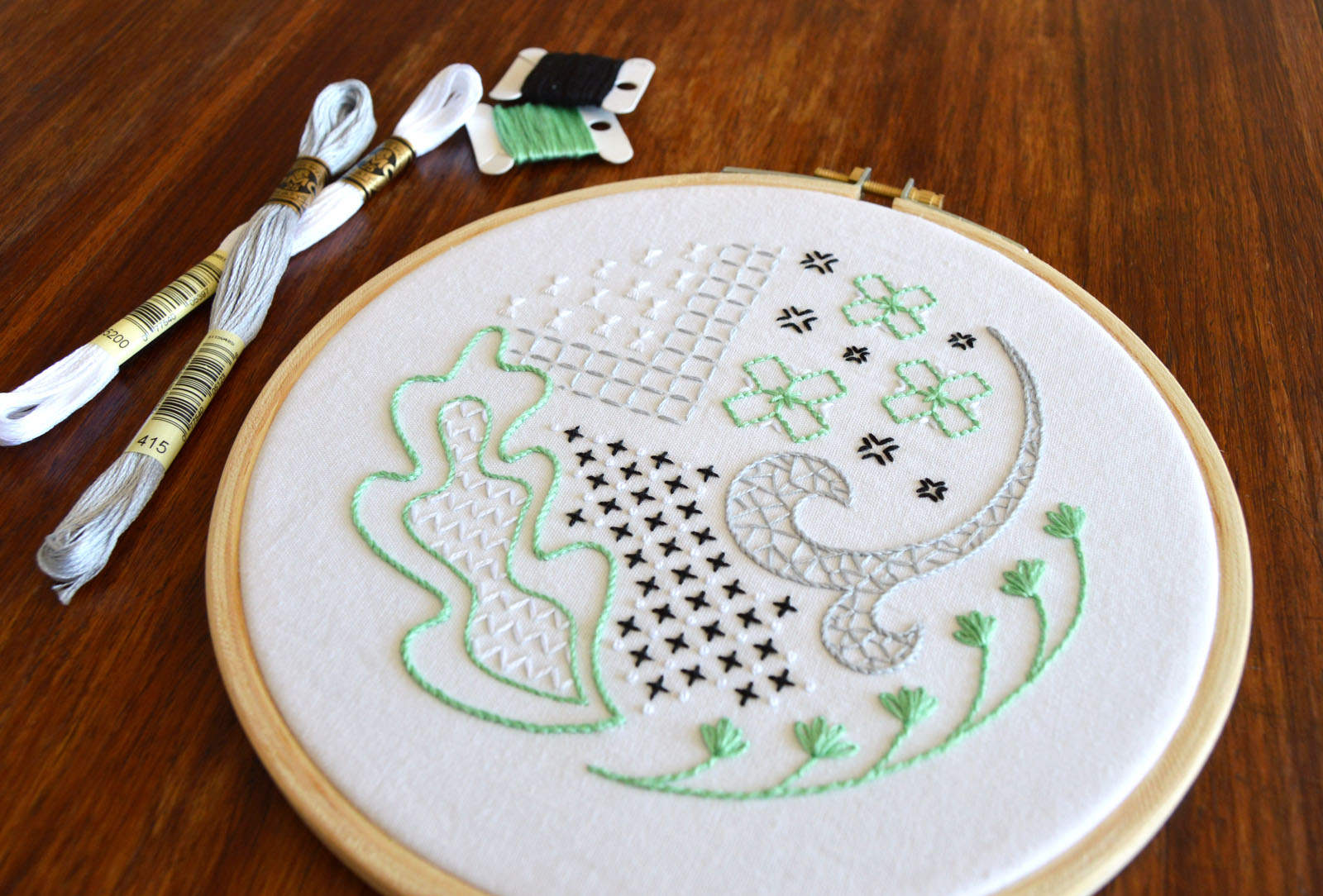It's blackwork, but not on even-weave fabric. And using surface embroidery stitches. Done in colour. So not technically blackwork, but inspired by it.
Traditional blackwork is striking, done in black thread on white even-weave fabric in a style that is structured and uniform. It's beauty lies in stitch repetition. If you're not familiar, you can read more about this type of embroidery and how to do it on Craftsy, Nordic Needle and Sew Guide.
Historically dictated by the weave of the fabric, blackwork has evolved to include more freeform stitching and colour, making the leap to a creative surface embroidery design that mimics blackwork that much easier to envisage.
Sonia Lucano's book, Made in France: Blackwork, is beautifully photographed and full of inspiring blackwork that feels contemporary despite the designs drawing on traditional patterns. And a pinterest search shows the more freeform elements of this style of embroidery as well as the repeat patterns that inspired my surface take on this style of embroidery.
Adding colour isn't a new idea, but it does add more interest to a design already made more interesting (I think) by the use of various surface embroidery stitches as opposed to the limited number used in traditional blackwork.
Mock Blackwork, the second in the Mock range, is available as a PDF pattern on Etsy and Craftsy.







